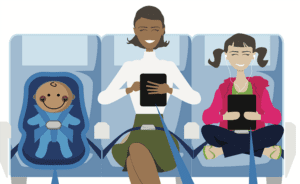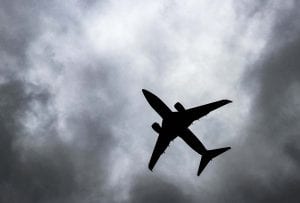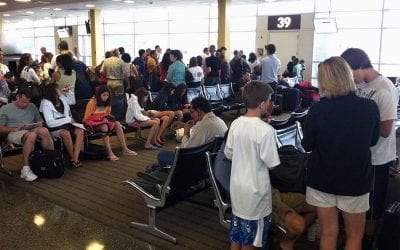Flying with a 2-year-old is taking an injury chance. But parents often take that chance to save money.

I grimace when I see an infant flying in their parent’s lap. I’ve been on more than a few flights over the years when sudden turbulence would cause virtually any infant flying in their parent’s lap to launch in the cabin. On one flight, the father was lucky. We hit light turbulence for a short time, and he could hold on to his daughter. When we reached calm air, you could see the sweat dripping from his brow due to his effort to keep his daughter safe.
Your child must be under two years old to qualify as a lap infant. The day a child turns 2, that free ticket disappears. You can save money if your child is nearing their second birthday. Moving your vacation a month or two earlier could save you money. But, it will not make traveling with your lap child any safer.
Sometimes the forces are more than any parent can counteract.
Other children haven’t been so lucky. For example, in a well-documented 1994 crash, a baby girl flying in her mother’s lap was killed aboard US Airways flight 1016. Her mother survived. The DC-9-31 was landing in a severe thunderstorm when a microburst generated by the storm hit it. Thirty-seven of the fifty-two passengers died. The National Transportation Safety Board (NTSB) interviewed the child’s mother. NTSB spokesperson said of the child’s death, “The mother simply stated she could not hold onto her child.”
While not requiring infants (children under the age of two) to be properly restrained while flying, according to the FAA (Federal Aviation Administration),
“…the safest place for your child on an airplane is in a government-approved child safety restraint system (CRS) or device, not on your lap. Your arms aren’t capable of holding your child securely, especially during unexpected turbulence.”
Studies show that lap children die more often than other children who fly.

Commenting on the child-safety study, Alexandre Rotta, MD, FCCM, Chief, Division of Pediatric Critical Care Medicine at UH Rainbow, the study’s principal investigator said,
“The pattern we identified in our analysis is intriguing and could indicate lap infants are at greater risk of death related to in-flight environmental factors such as sleeping arrangements.”
We know that the American Academy of Pediatrics guidelines recommends putting infants to sleep in their cribs/beds rather than sleeping in their parents’ beds, as the risk of suffocation is as much as 40 times greater than babies who sleep in their crib.
It seems clear that parents who fly with their infant as a lap child are gambling with their child’s life.
Other factors concerning child safety on planes include what can happen within airplane cabins during turbulence and meal service.
During turbulence, bags stowed in overhead bins can move around and later fall out when a passenger opens the overhead bin door. If turbulence is severe, overhead bin doors can be dislodged, and heavy carry-on bags and other belongings can fall or fly out of the bins.
Children in aisle seats who aren’t paying attention to their surroundings can have fingers crushed by airplane food carts that can barely fit down airplane aisles. And anyone in an aisle seat is more susceptible to hot beverage spills.
Children are safer in middle seats — or window seats — while flying.
Parents of infants with respiratory problems need to consult with their child’s physician before having them fly. A plane flying at or near 40,000 feet (12,200 meters) is generally pressurized to the equivalent of 6,000–8,000 feet (1,830–2,440 meters), which has about 19–24 percent less oxygen in the airplane’s cabin air than the infant experiences at sea-level. That differential could be a severe problem for a child with breathing difficulties. Speak with your doctor.
The best advice is to use a car seat on a plane.
If a flight is not full, ask the gate agent to provide you with an empty seat next to you. They usually will do this if at all possible. If you travel with a car seat for your infant, you can check it if you do not get an empty seat next to you. Even though it allows flying with a lap child, the FAA urges passengers to place children in a government-approved child seat. Additional information is available in FAA guidance (PDF) and on the National Highway Traffic Safety Administration website. Not all car seats are approved for use in airplanes.
READ ALSO:
Wanted: A DOT working in the public interest
Why can foreign transaction fees apply here in the USA?

Charlie Leocha is the President of Travelers United. He has been working in Washington, DC, for the past 14 years with Congress, the Department of Transportation, and industry stakeholders on travel issues. He was the first consumer representative to the Advisory Committee for Aviation Consumer Protections appointed by the Secretary of Transportation from 2012 through 2018.



